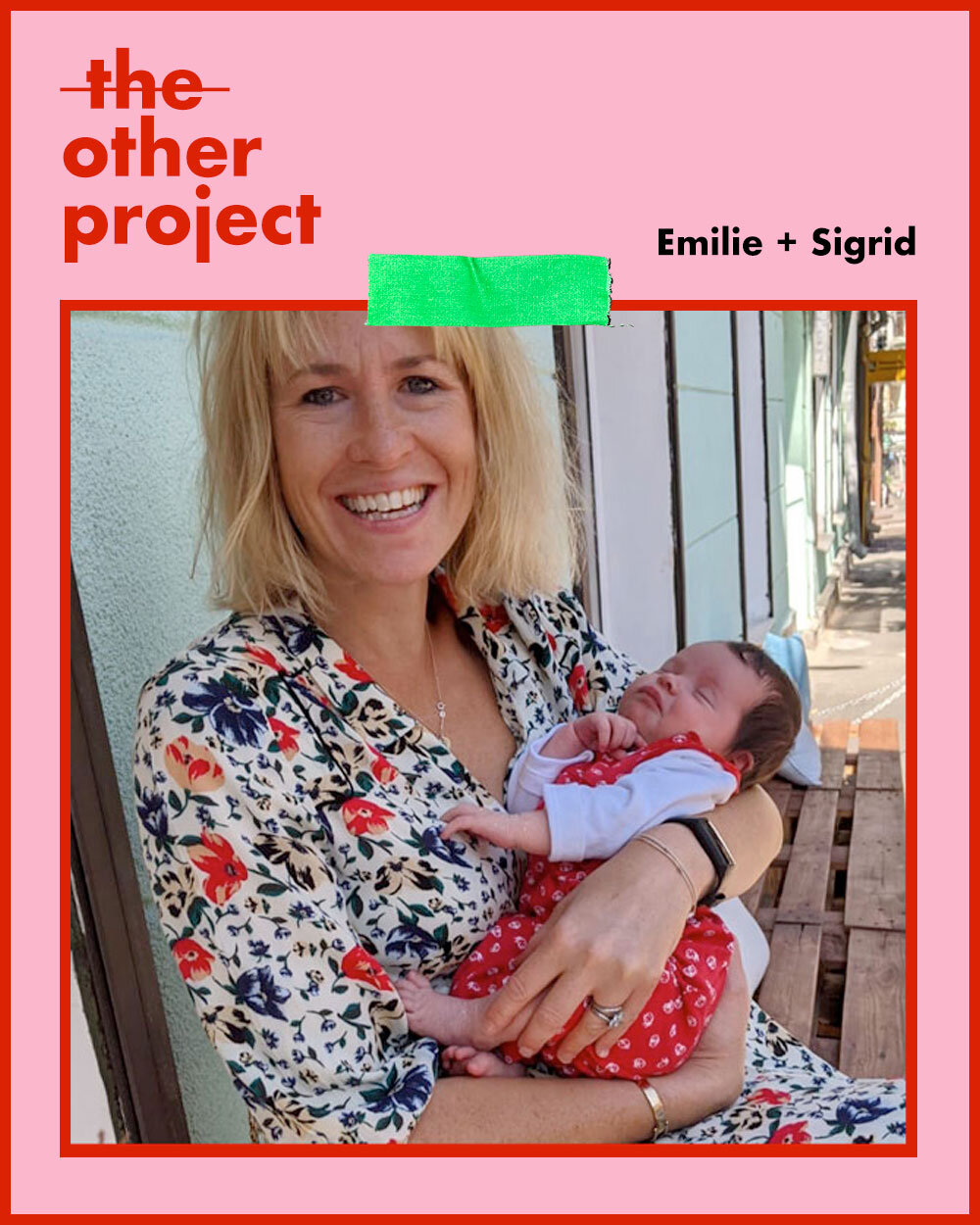MY OTHER PROJECT • by Emilie Jones
Our story starts five years ago when I was pregnant and on cloud nine. At 11 weeks we experienced a missed miscarriage and had not one, but two, ERPCs to remove the “retained products”.
We kept trying, but months went by and nothing happened so I went into hospital for a routine hysteroscopy. I woke up hours later to discover that I had Asherman’s Syndrome, that the surgeon had accidentally punctured my uterus and I’d had emergency stomach surgery to repair the hole.
Asherman’s Syndrome is an acquired condition where scar tissue forms in the uterus, making it near impossible to fall pregnant. My Asherman’s (like 90% of cases) was caused by an ERPC.
More uterus surgery and hormone replacement therapy to try and fix my endometrium followed and then years of exhausting IVF. In the end, we did ten rounds without success.
Last summer, we changed strategy and, after much research, pursued surrogacy abroad. We had a few precious embryos, nicknamed ‘The Moomins’, in the freezer and wanted to give them the best possible chance. The Moomins flew to Ukraine in a thermos flask. We were quickly matched with a surrogate and one embryo, ‘Little My’, was transferred to our surrogate, our superhero.
On Christmas Day morning, we received a text with a positive pregnancy test, it was a total shock. We must have made Santa’s nice list.
Late February, we travelled to Kyiv for the 13-week scan and saw our baby wriggling away. Seeing is believing and we could breathe (cautiously) again. Getting your head around your baby growing in someone else’s tummy in a foreign land is a challenge, but Covid-19 took things to the next level.
Closed borders, zero flights and lockdowns in both countries meant we couldn’t go to scans and we worried we wouldn’t make the birth. So, instead of baking banana bread, I spent Lockdown 1.0 writing letters to politicians and embassies. We bought a car and my husband had nightmares about crossing borders illegally with the baby hidden in the boot.
By August borders had thankfully re-opened and we headed to Kyiv to be there for the birth. Our daughter Sigrid (meaning ‘victory’ and ‘beauty’, honouring my Swedish heritage) arrived early September. I watched our superhero deliver her, a magical, surreal and confusing moment - I couldn’t understand a word of what was being said - and suddenly, Sigrid appeared. I cried and one of the nurses asked if I was OK. How do you explain (via Google translate) the raft of emotions that are unleashed in the moment you’ve been waiting five years for? Instead, I nodded, smiled and squeezed our ‘chudo’ (‘miracle’ in Russian) as they were all calling her.
Covid protocol meant that only one person was allowed to accompany our surrogate at the hospital, so it took five days before my husband could meet Sigrid. He paced the streets of Kyiv, bringing food daily and waving from the street below our window where I held her up to see him.
During our hospital stay, I bonded with our baby girl, had conversations in Russian about jaundice and constipation, and shared sweet moments with our superhero - we drank tea and chatted via Google translate. She taught me a beautiful Soviet lullaby about the polar bear Ymka that she would sing to Sigrid in her tummy.
Out of hospital, we were knee-deep in paperwork and Sigrid had more appointments with lawyers than most have in a lifetime. Thanks to the British Embassy and HMPO we were back home in London in record time.
Lockdown 2.0 certainly looks different to 1.0 in our house; I pinch myself daily when I realise Sigrid is here. Just like the Moomin character Little My, she is brave and determined, not even a global pandemic could stop her.
Follow Emilie @theeggandspermrace

